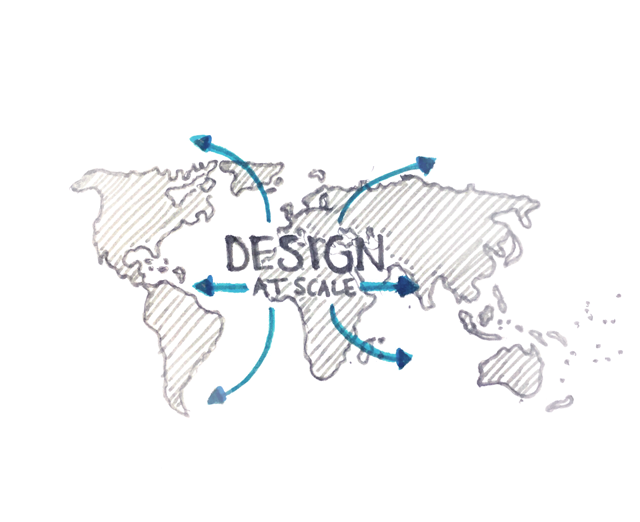Working in technology, it’s probably no surprise that the industry is growing at a constant rate of change. As a result, we’ve found ourselves faced with the opportunities and challenges of growth within our company and within our in-house design team here at Red Hat. This year, we’ve added several new team members to the Creative Strategy + Design team — roles that didn’t exist before and in locations across the country and around the world.
So, with all this change in scale, I often find myself asking: How does design scale? How do we stay creative and connected, while continuing to learn and expand our perspectives as a global creative team? How do we keep up with trends, job roles, and company strategies?
It begins with understanding and empathy. Be willing to ask questions and to listen to what others have to say. Building a global team is more than a location but rather building a team of people who have different interactions, insights, and perspectives. These perspectives are what inspires creative work. And, if you combine that with collaboration, it fosters an environment where the best ideas are generated.
That success continues with process and documentation. It may sound dry but having your process refined helps with ambiguity and confusion. Knowing what the standards are and where to find information sets a foundation to not sweat the small (or big) stuff and focus on the creative task at hand. At Red Hat we use Agile methodologies to get our work done, adapted from software development. That means we’re making commitments to what’s possible with realistic timelines, setting our goals with our stakeholders, and dividing up the work (with cross-disciplinary experts) to get it done quickly and creatively.
Staying creative is essential to the concept of design at scale, and for something to scale it needs to be nurtured from the start. Creativity is the center of what we do, so taking the time to learn, collaborating with others, and sharing ideas gives the gift of creativity to others. Half of the equation is coming up with the ideas and the design execution but the other half is figuring out how to share your work. We’ve discovered that it’s better to take a look at how to break down a piece of creative, place it into a kit of parts and guidelines so others can pick it up use it and remix it versus being the gatekeeper to our artwork. We’ve also looked at ways to build libraries of design assets and provide tips and tricks training to others so they can build on what we’ve created.
Lastly, building things only gets you so far if you aren’t connecting it back to people. Staying connected with others—by looking both outward and inward— is imperative to design at scale. We must take our work and bring it to others to use and make an impact. We must understand what challenges they are facing and how to evolve what we provide to best serve the greater good. It’s also about staying connected to each other as a team — to know what the other designers are working on and to learn and be inspired by them. We stay connected through chat channels and emails, but also through sharing our work with each other. We’ve started taking time each week to document our work and share it out with our teammates. You never know when inspiration will strike and having insight into all the great work that’s going on only strengthens our brand and our creativity.
What challenges are you facing in your organization around scale? How do you stay connected while looking outside for new perspectives? What tools and best practices have you found?
About the author
Browse by channel
Automation
The latest on IT automation for tech, teams, and environments
Artificial intelligence
Updates on the platforms that free customers to run AI workloads anywhere
Open hybrid cloud
Explore how we build a more flexible future with hybrid cloud
Security
The latest on how we reduce risks across environments and technologies
Edge computing
Updates on the platforms that simplify operations at the edge
Infrastructure
The latest on the world’s leading enterprise Linux platform
Applications
Inside our solutions to the toughest application challenges
Original shows
Entertaining stories from the makers and leaders in enterprise tech
Products
- Red Hat Enterprise Linux
- Red Hat OpenShift
- Red Hat Ansible Automation Platform
- Cloud services
- See all products
Tools
- Training and certification
- My account
- Customer support
- Developer resources
- Find a partner
- Red Hat Ecosystem Catalog
- Red Hat value calculator
- Documentation
Try, buy, & sell
Communicate
About Red Hat
We’re the world’s leading provider of enterprise open source solutions—including Linux, cloud, container, and Kubernetes. We deliver hardened solutions that make it easier for enterprises to work across platforms and environments, from the core datacenter to the network edge.
Select a language
Red Hat legal and privacy links
- About Red Hat
- Jobs
- Events
- Locations
- Contact Red Hat
- Red Hat Blog
- Diversity, equity, and inclusion
- Cool Stuff Store
- Red Hat Summit




